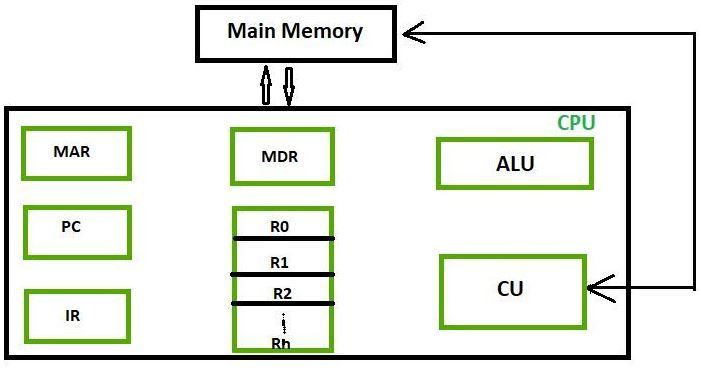Where Is The Registers Located
Different Classes of CPU Registers
In Figurer Architecture, the Registers are very fast computer memory which are used to execute programs and operations efficiently. This does by giving admission to normally used values, i.east., the values which are in the signal of operation/execution at that time. So, for this purpose, there are several different classes of CPU registers which works in coordination with the computer memory to run operations efficiently.
The sole purpose of having register is fast retrieval of data for processing past CPU. Though accessing instructions from RAM is comparatively faster with difficult bulldoze, information technology notwithstanding isn't plenty for CPU. For fifty-fifty better processing, there are memories in CPU which can get data from RAM which are about to be executed beforehand. Afterwards registers we have cache memory, which are faster simply less faster than registers.

These are classified as given beneath.
- Accumulator:
This is the most frequently used register used to shop information taken from retentivity. It is in different numbers in unlike microprocessors. - Retention Address Registers (MAR):
It holds the address of the location to be accessed from retention. MAR and MDR (Retentivity Data Register) together facilitate the communication of the CPU and the chief retentiveness. - Memory Data Registers (MDR):
It contains data to exist written into or to be read out from the addressed location. - General Purpose Registers:
These are numbered equally R0, R1, R2….Rn-1, and used to store temporary data during any ongoing performance. Its content can be accessed by assembly programming. Modern CPU architectures tends to use more GPR so that annals-to-annals addressing can be used more than, which is insufficiently faster than other addressing modes. - Plan Counter (PC):
Program Counter (PC) is used to proceed the track of execution of the program. It contains the retentiveness address of the side by side teaching to be fetched. PC points to the address of the side by side educational activity to be fetched from the main retention when the previous didactics has been successfully completed. Plan Counter (PC) also functions to count the number of instructions. The incrementation of PC depends on the type of architecture existence used. If we are using 32-bit compages, the PC gets incremented by 4 every time to fetch the adjacent instruction. - Instruction Register (IR):
The IR holds the instruction which is just nigh to be executed. The instruction from PC is fetched and stored in IR. As soon equally the instruction in placed in IR, the CPU starts executing the pedagogy and the PC points to the next education to be executed. - Condition code register ( CCR ) :
Status code registers contain different flags that indicate the condition of any functioning.for instance lets suppose an performance acquired cosmos of a negative event or zilch, so these flags are prepare high accordingly.and the flags are
- Carry C: Set to 1 if an add together functioning produces a behave or a subtract operation produces a borrow; otherwise cleared to 0.
- Overflow Five: Useful only during operations on signed integers.
- Zero Z: Set to ane if the outcome is 0, otherwise cleared to 0.
- Negate N: Meaningful only in signed number operations. Set to 1 if a negative effect is produced.
- Extend X: Functions every bit a carry for multiple precision arithmetics operations.
These are generally decided by ALU.
So, these are the different registers which are operating for a specific purpose.
Where Is The Registers Located,
Source: https://www.geeksforgeeks.org/different-classes-of-cpu-registers/
Posted by: wallaceandayseen79.blogspot.com


0 Response to "Where Is The Registers Located"
Post a Comment